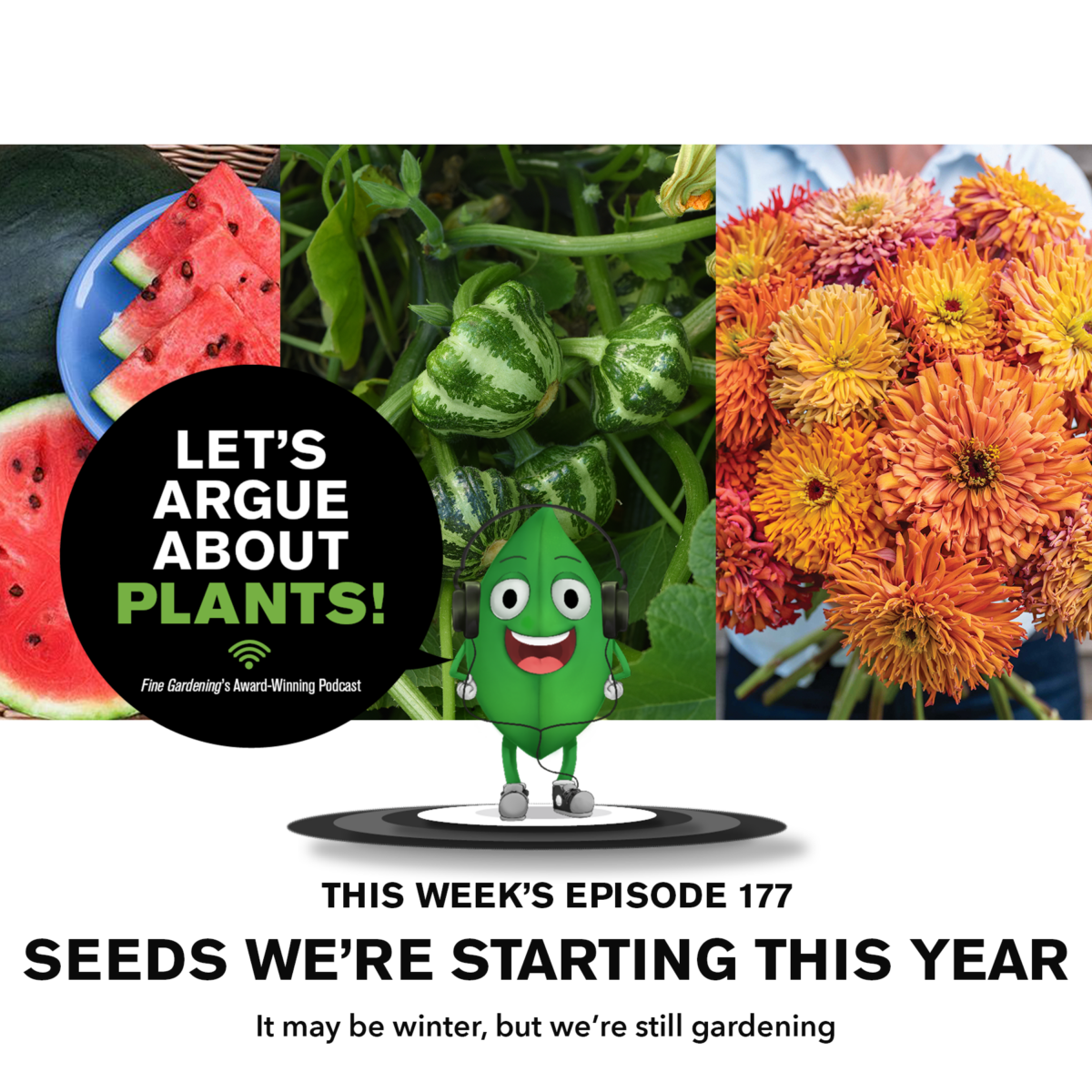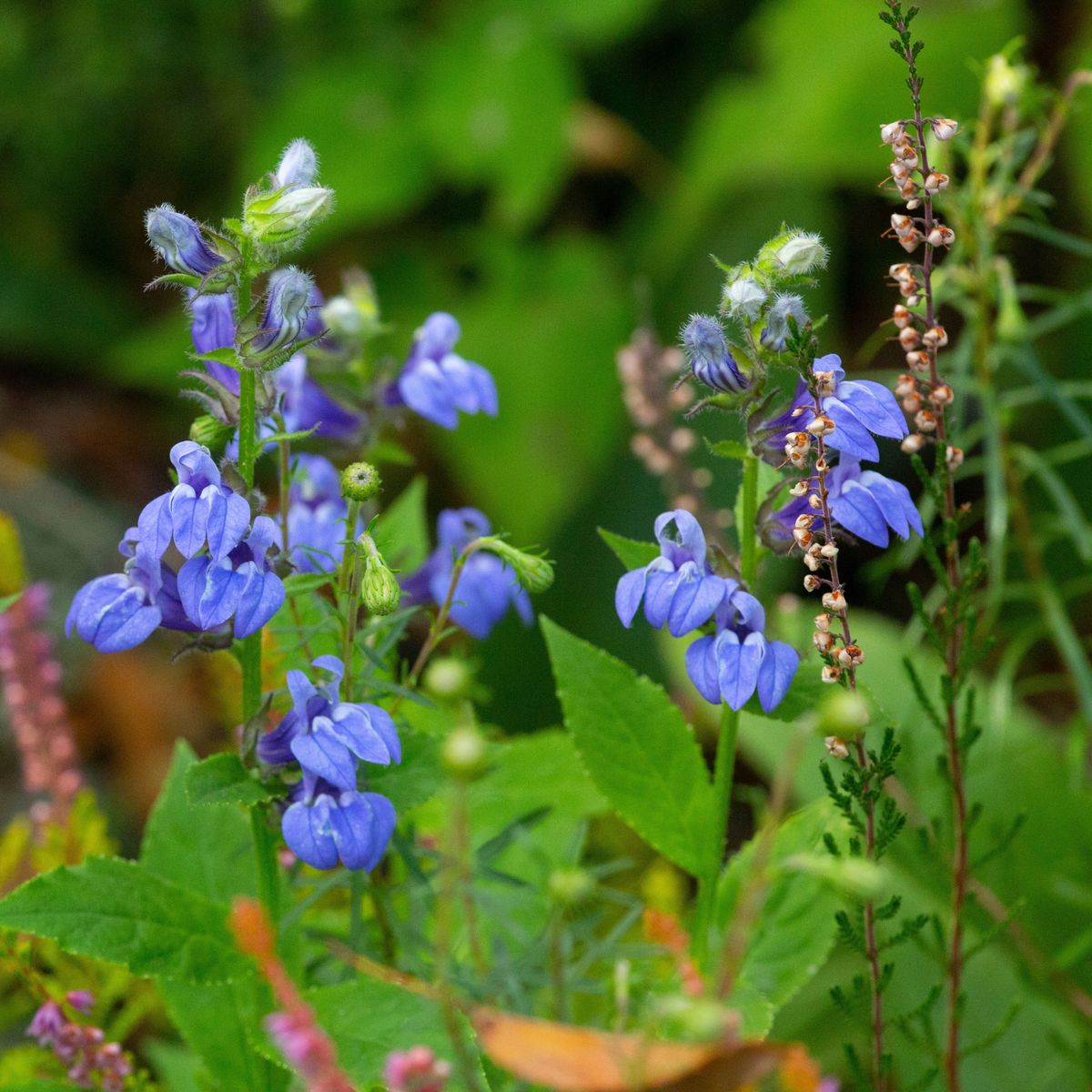For what seems like 8 million years, I have grown ‘Tomatoberry’. It’s a small cherry tomato variety that is not rare or superflashy, but it works well for me, so I stick with it. My gardening friends are similar: They plant the same varieties year after year because those varieties are proven performers and they don’t want to mess with what works. But when you rock the boat a bit, you occasionally stumble upon a new variety that is just as great, or perhaps even better, than the old standbys. That’s how I ended up replacing my ‘Sweet 100’s’ cherry tomatoes with ‘Tomatoberry’ many years ago. The following options may not be brand-new, but they have proven themselves to be reliable “newer” vegetables, and they might be good additions to your garden this season.
‘Flashy Trout Back’ is a sweeter-than-normal romaine

I loved the spot-on description of this lettuce provided by the staff at Territorial Seed: “Imagine dipping a paintbrush in red paint and giving it a hard shake onto your romaine lettuce.” This is a gorgeous headed lettuce, but the succulent, slightly sweet leaves are not as bitter or tough as those of traditional romaine. The heads are slightly looser, too, which allows you to pick the outside leaves for smaller salads before the head fully develops (in 55 days). This variety also resists downy mildew, lettuce-drop disease, and mosaic virus.
Expect a plethora of petite peppers with ‘Cupid’

If you have trouble with peppers (and I do), ‘Cupid’ might be a good choice next season. Although the plants are rather large, they produce scores of miniature bell peppers early in the season (they mature to green in 55 days and to red in 75). It’s a disease- and sun-scald-resistant variety that keeps producing right into fall. I was shocked to see Fine Gardening assistant editor Carol Collins’s plants still filled with fruit at the end of September last year. The small heart-shaped peppers are the perfect snack to pair with a bowl of cherry tomatoes.
‘Damsel’ is a disease-resistant gem

There’s a reason that ‘Jetstar’ is a mainstay in veggie gardens around the country: It’s a reliable producer on plants that are fairly resistant to fungal diseases. The fruit, however, is pretty seedy and on the tart side. Enter ‘Damsel’, a variety that has shown great resistance to late and early blights, as well as other types of fungal diseases. During the Northeast’s exceptionally wet and humid summer of 2018, one ‘Damsel’ plant produced nearly 19 pounds of fruit in my garden. The flavor of the meaty, pinkish tomatoes is similar to that of a sweet ‘Brandywine’, but the skin doesn’t crack as readily. And unlike the late-to-mature ‘Brandywine’, these tomatoes are ripe for the picking in 70 days.
If you’re looking for truly unique, try ‘Thai Yellow Egg’ eggplant

This little baby is not for the faint of heart, but it might be my favorite newcomer to the veggie garden. If you’re looking for an eggplant to make into parmesan, this isn’t your best bet, though. The small round fruits are harvested when they’re around the size of an egg and colored bright yellow (if they’re orange, they’re overripe). They don’t have a lot of flesh, but when halved or quartered and thrown into stir-frys or curries, they add a tangy flavor. As with other small eggplant varieties, the flesh doesn’t break down into a squishy mess when cooked; instead, it keeps a somewhat crunchy texture. My plants stayed fairly pest-free (a few flea beetles did eventually cause cosmetic damage), and I was able to harvest handfuls of fruit in about 75 days from transplant.
Things to look for with new veggies

Not everything that’s new is good. Take blue tomatoes, for instance—I have yet to find a tasty variety within the ranks of that new tomato trend. Also, sometimes new just means more of the same, with the only new part being the name of the variety. Here are some traits to look for when experimenting with new seed varieties.
- Big production in a small package
- Disease resistance
- Better flavor
- Even better looks
‘Baby Bubba’ okra will fit into any size garden


Even if you’re not from the South, okra should be on your to-grow list. If you harvest the fruit when it’s small (no bigger than 2 to 3 inches long), it isn’t slimy or bitter at all—a common complaint. And the plants are beautiful, with large umbrella-like leaves and flowers resembling a tropical hibiscus. However, I always had an issue growing traditional okra because it’s a space hog, with the plants reaching 5 to 6 feet tall (and nearly as wide). ‘Baby Bubba’ okra is only 3 feet tall and not as wide, yet it produces as many full-size fruits as a plant twice its size. You can expect to harvest 50 to 55 days from transplant; just watch for the beautiful yellow flowers. Picking time won’t be too far away.
It doesn’t get much earlier than ‘Valentine’ tomato

Last year I found a potential replacement for my much-loved and aforementioned ‘Tomatoberry’. The new cherry tomato that captured my heart is ‘Valentine’, a variety that’s indeterminate, resistant to early blight, and one of the heaviest producing tomatoes I’ve ever grown. In fact, when several of my sauce tomatoes failed to produce the quantities I needed for canning, I turned to ‘Valentine’ and used them to fill in—skins and all. The sweet, grapelike fruits are extremely meaty and are produced in clusters. Also, it’s harvest time less than two months after germination!
Danielle Sherry is senior editor.
Photos: Danielle Sherry
Sources:
- Baker Creek Heirloom Seed Co., Mansfield, Mo.; 417-924-8917; rareseeds.com
- Johnny’s Selected Seeds, Winslow, Maine; 877-564-6697; johnnyseeds.com
- Territorial Seed Co., Cottage Grove, Ore.; 800-626-0866; territorialseed.com
- W. Atlee Burpee & Co., Warminster, Pa.; 800-888-1447; burpee.com











